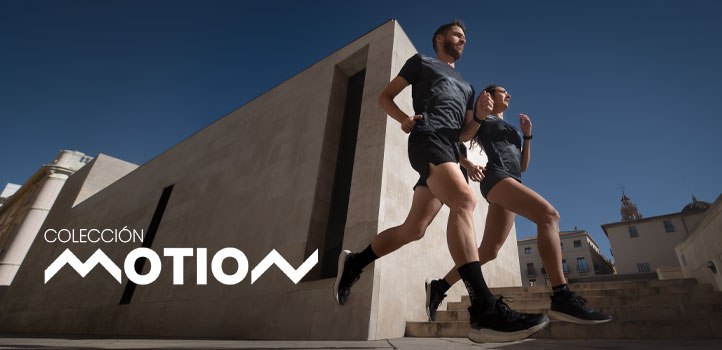Subscribe to our newsletter to find out about all the news and promotions, and automatically receive a welcome discount coupon in your email.
 Mammals are a homeothermic species, this means that for our physiological and metabolic mechanisms to work properly, we must necessarily maintain a constant internal temperature.
Mammals are a homeothermic species, this means that for our physiological and metabolic mechanisms to work properly, we must necessarily maintain a constant internal temperature.
Body temperature is the result of the balance between heat gains and losses. Just as when we train or compete with high heat and humidity, our body struggles to avoid hyperthermia or heat stroke, in conditions of intense cold the problem is to avoid excessive heat losses that alter homeostasis, affect our performance and ultimately They can lead us to one that seriously compromises our health.
A cold environment is defined by conditions that cause greater than normal body heat loss. When skin temperature and internal temperature drop, the hypothalamus activates the necessary mechanisms to maintain internal temperature and increase heat production, these mechanisms are: shivering, cutaneous vasoconstriction and increased metabolic heat.
Muscle function is depressed in cold environmental conditions, muscle recruitment patterns may be affected, and the efficiency of muscle actions is decreased.
If we train at the same intensity, we initially use more muscle glycogen and fatigue occurs earlier, therefore we must decrease the intensity or be willing and ready to consume more energy.
Maximum force and peak power may decrease at low temperatures, due to the prolongation of the time in which the muscle fibers reach maximum tension and due to the slowing down of muscle chemical reactions.
Breathe airCold does not freeze the airways or lungs, although it does reduce the rate and volume of breathing.
During cold exercise, the production of metabolic heat balances the losses, however when fatigue sets in, muscular activity decreases and heat production decreases, in long-distance activities, for example, if we cannot maintain the rhythm and production of heat is less, we could go into hypothermia.
With cold, there is also an increase in diuresis, which would be due to an increase in urine production due to peripheral vasoconstriction, inhibiting the secretion of antidiuretic hormone, this can affect the water balance of the body causing dehydration.
In addition, the wind greatly accelerates the loss of body heat by conduction and convection, for this purpose we know it as "theft of heat by the wind"
In short, all these metabolic and physiological adaptations force our body to make an additional effort that we must try to counteract or minimize to prevent our performance from being too affected.
Running winter, running in winter, training in winterWhether running on foot or cycling, issues to take into account when we continue with our training plans in the middle of winter.
1º It is always important to start a training session slowly and increase the pace little by little, because in winter, this is even more important, since with the cold we can easily injure ourselves, in addition to the extra use of muscle glycogen if we start very Quick.
We should start the session with a table of warm-up and muscle activation exercises, and start the session gently.
2º Our wardrobe will be adapted to the atmospheric conditions of each moment, that is to say there are days of December or January, for example, in which the temperatures are not normal for the time, therefore, before going out to train I advise you to consult the thermometer, because if we are more warm than necessary, we are going to suffocate and if we are cold, we will not get warm throughout the session and our performance will not be optimal. Today there are very high quality sports garments on the market, designed for the coldest days, it is important to allow ourselves to be advised well by a professional and invest in this type of garment, being cold while training is very unpleasant and can cause us to abandon the session ahead of time.
 3º With the cold, we tend to neglect hydration andlimentation, this is a very frequent mistake, we think that with the cold we do not sweat as much and it is not necessary to refresh ourselves, big mistake, with the cold, in addition to the energy expenditure due to the effort, the energy requirements that our body needs are added, to maintain the temperature, so we will be even stricter than in summer.
3º With the cold, we tend to neglect hydration andlimentation, this is a very frequent mistake, we think that with the cold we do not sweat as much and it is not necessary to refresh ourselves, big mistake, with the cold, in addition to the energy expenditure due to the effort, the energy requirements that our body needs are added, to maintain the temperature, so we will be even stricter than in summer.
4th On very cold days we can also use some special cream to warm up, especially if we are going to train on a bicycle, always bearing in mind that this is not a substitute for a good exercise table to warm up.
5th We have to be very careful with footwear, the cold that enters our feet is quickly distributed throughout the body. Good socks are the necessary complement to our footwear, if the training is on a bicycle, we can use boot covers, special for cycling, it is very unpleasant, and dangerous, to get very cold on the feet.
On a bicycle it gets much colder, because in addition to speed, our feet, once fixed on the pedals, remain completely static, it is advisable to move the fingers frequently, for this, with low temperatures, we will not squeeze the shoes so hard, the more a piece of our wardrobe squeezes us, the worse blood circulation, and therefore, the colder.
6th At the end of the session, we will quickly change our clothes, to be dry, and then carry out the pertinent stretches. We can also do them after the shower, that if without letting a long time pass from the end of the session, because our muscles will be cold and we will not be able to stretch well and it is also dangerous.
7º At the beginning of training, it is very good to cover our mouths and noses with a Buff-type handkerchief, so that the aire that we breathe is not so cold and can cause problems in the pharynx, as well as an annoying pain in the mouth.
8º A good part of the heat generated by our body escapes through the head, it is advisable to wear a hat, there are very thin ones (type cross-country skiing). We must also protect our hands, whether riding a bicycle or running, special gloves for cycling, which stop the wind, are the most appropriate.
9th If the training is with the bicycle, we have to protect ourselves from the wind especially on the descents, since in a few minutes we can get very cold and it will be difficult for us to warm up again on the next climb. We must choose our wardrobe very carefully, the good combination of garments is more important than what a single garment can provide us.
10º In winter we can be more lazy to go out to train and many people have the perfect excuse to lock themselves in a gym, but if we know how to see the positive side, we can come to like training more in winter than in summer. The airThe cold is the perfect stimulus to get going, the low temperatures invite us to go a little faster, the scarcity of daylight hours, sometimes cause us to take advantage of the time
Source: Sant Cugat High Performance Center
Other entries that they may interest you.
42K · All rights reserved


Comments
Post a first comment for this entry!